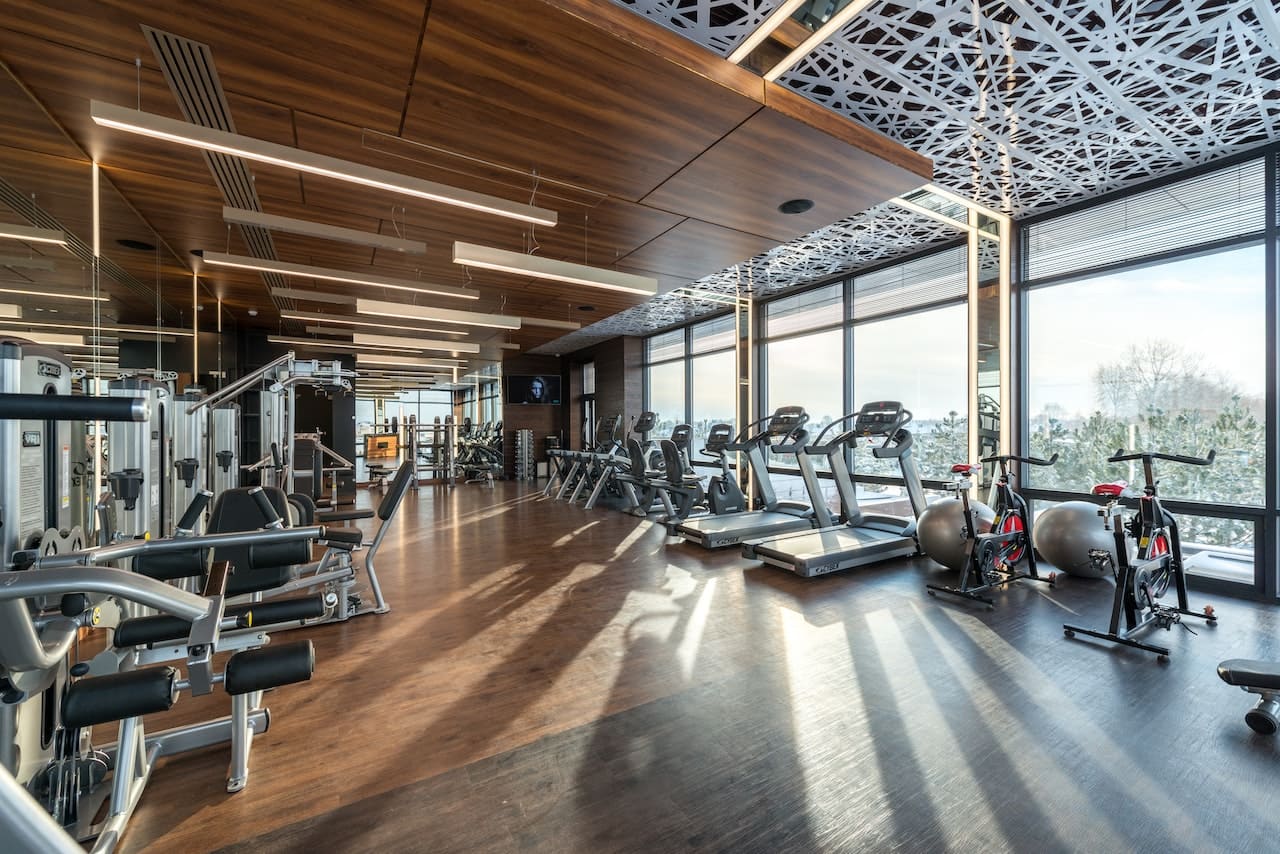How to start a boutique fitness studio in 2024
Ready to start your own boutique fitness studio in 2024? Follow this ultimate guide that covers everything from business planning to marketing strategies.
Are you ready to take the first step into the booming world of the fitness industry? Well, you've landed at the right place! In 2024, the fitness space is more vibrant and promising than ever, with a surge in people preferring boutique fitness studios over traditional gym memberships.
Why, you ask? Because boutique studios offer a personalised, community-driven experience that big-box gyms just can't match. And guess what? You can be at the helm of such a transformative space, steering your own fitness business towards success and profitability.
But hold your horses! Before you dive in, it's crucial to have a detailed plan in place. That's where we step in with this comprehensive guide, tailored just for you. We're here to walk you through every crucial step.
In this guide, we're going to walk you through a step-by-step journey of opening your very own boutique fitness studio. From understanding the market demand to selecting the perfect location and building a brand that resonates with your target audience, we've got it all covered.
And trust us, it's a good idea to pay attention to the nitty-gritty, as it could mean the difference between becoming a beloved local boutique gym or just another big-box gym in the neighbourhood.
So, grab a cup of coffee and settle in. You're about to embark on an exciting journey to opening your very own boutique fitness studio in 2024. Let's get started!

Source: Pexels
Understanding the current global boutique fitness studio market
Before we embark on the thrilling journey of opening your own boutique fitness studio, it's vital to grasp the current global landscape of the boutique fitness market.
Let's delve into an insightful analysis of the prevailing market trends, the present target audience, and the competitive scenario that awaits you in this dynamic industry.
1. Current global market trends
The boutique fitness industry is currently experiencing a renaissance, with a notable shift towards more personalised and community-centric fitness experiences.
Globally, there's a growing preference for boutique fitness studios over traditional gyms, as they offer specialised classes, fostering a sense of community and belonging among members.
Moreover, the industry is witnessing a surge in technology integration, with studios offering virtual classes and app-based services, catering to the tech-savvy generation.
Sustainability is another significant trend, with studios adopting eco-friendly practices to appeal to the environmentally conscious audience. Additionally, there's a growing emphasis on holistic wellness, with studios incorporating mental health and well-being programs alongside physical fitness regimes.
2. Current target audience analysis
In today's world, the target audience for boutique fitness studios is incredibly diverse, encompassing individuals from various age groups, fitness levels, and backgrounds. A significant chunk of this audience is millennials and Gen Z, who are keen on personalised, engaging, and community-centric fitness experiences.
These generations are willing to invest in high-quality fitness solutions that align with their values and lifestyle. Moreover, there's a growing trend of people seeking fitness regimes that offer a blend of physical well-being and mental relaxation, making boutique fitness studios a preferred choice.
Furthermore, the current audience is tech-savvy, valuing the integration of technology in their fitness routines. They appreciate the convenience of booking classes through apps and the availability of virtual classes, which has become a significant attraction in the post-pandemic world.
3. Current global competitive landscape
As you step into the global arena of the boutique fitness industry, be prepared to witness a vibrant and competitive landscape. The market is brimming with a variety of boutique studios, each offering a unique blend of fitness experiences, from high-intensity interval training to yoga and strength training sessions.
Prominent players in the industry still include franchise-owned global boutique gyms like Orangetheory Fitness and F45. They have set high standards, focusing on community engagement and utilising social media platforms effectively to build brand awareness.
These successful boutique fitness studios have leveraged technology to enhance the customer experience, offering both in-studio and virtual training sessions, thus expanding their reach globally.
Moreover, the industry is witnessing a surge in innovative business models, with studios offering flexible membership plans, personalised training sessions, and a host of amenities to lure in fitness enthusiasts.
The competition is fierce, but there's ample opportunity for newcomers to carve a niche by offering unique, high-quality fitness solutions that cater to the evolving demands of the global audience.
As we venture further, we'll equip you with the knowledge and tools to navigate this competitive landscape successfully, helping you to establish a thriving boutique fitness studio that resonates with the global audience.
Stay tuned, as we unfold the blueprint to launching your dream fitness venture in the upcoming sections. The adventure is just beginning!
Read also: How to prepare your fitness business for the looming recession?

Source: Pexels
Planning your boutique fitness studio
Starting your own boutique fitness business is an exciting venture that needs careful preparation and a touch of love for what you do. Let's look closely at the important steps and things you need to think about that will help create a solid foundation for your successful fitness business.
1. Choosing a niche
First things first, pinpointing your niche is a pivotal step in setting the foundation of your fitness studio. The fitness industry is vast, offering a plethora of options ranging from yoga, pilates to high-intensity interval training.
Conduct a market research to gauge the preferences of your target audience. Are they leaning towards strength training or are they more inclined towards a serene yoga session? Remember, choosing a niche that resonates with your audience can be your ticket to success.
Read also: 3 exciting group class ideas for your fitness studio
2. Location selection and analysis
Next up, finding the perfect location is no less than hitting a jackpot in the fitness business. Your location should be easily accessible and situated in a neighbourhood that aligns with your brand's ethos.
Do some market research to understand the demographics of different areas and find a spot that screams 'this is it!'. Consider factors like parking space, visibility, and proximity to residential or commercial areas to ensure a steady flow of fitness enthusiasts to your studio.
3. Business model options
Now, let's talk about business! Crafting a business model that is both profitable and sustainable is a crucial step in your planning phase. Let's explore the various business model options that can be your pathway to establishing a successful boutique fitness studio.
a) Membership-based model
A popular choice in the fitness industry, the membership-based model offers stability and a steady stream of income. In this model, members pay a recurring fee, usually monthly or annually, to access your fitness services.
According to statistics, a well-managed membership model can retain up to 70-80% of its clientele, fostering a loyal community that thrives together. You can offer different tiers of memberships, with varied pricing and benefits, catering to a wide range of customer preferences.
b) Pay-per-class model
If you're looking to offer more flexibility to your clients, the pay-per-class model is your best bet. This model allows individuals to pay only for the classes they attend, providing them with the freedom to choose and not be bound by a membership.
It's a great way to attract newcomers who might be hesitant to commit to a membership initially. Moreover, it can be a lucrative option, as per-class fees are generally higher compared to the per-class cost under a membership plan.
c) Hybrid model
Why not have the best of both worlds? The hybrid model combines the membership and pay-per-class models, offering varied options to cater to a diverse clientele.
This model can maximise your revenue streams, attracting both committed members and those looking for flexibility. It's a win-win situation, where you can build a steady community while also welcoming new faces regularly.
d) Virtual classes and online memberships
The pandemic has propelled the growth of virtual fitness classes, with many studios adopting online platforms to reach a wider audience. In fact, fitness live streaming video usage experienced a staggering 971% increase. That's why offering virtual classes and online memberships can be a game-changer, allowing you to tap into the global market.
According to a recent survey, about 72% of individuals say that they prefer the flexibility of online fitness classes, and a significant portion prefers a blend of online and offline workouts. Incorporating this into your business model can set you apart in the competitive landscape.
Remember, that whether you opt for a membership-based model or a pay-per-class structure, the choice of your business model should align with your brand's vision and the preferences of your target market.

Source: Pexels
Legal and financial considerations
Now lets focus on the detailed aspects of legal and financial planning. Even though these parts might not seem as exciting as others, they are the backbone of your business, making sure everything runs smoothly and safely in the future.
1. Registering your business
First and foremost, establishing a legal foundation for your boutique fitness studio is paramount. You might be pondering whether to register as a sole proprietorship, a partnership, or perhaps a limited liability company (LLC or LTD).
Each business entity comes with its own set of implications on personal assets and tax structures. It's advisable to consult with a legal expert to choose the best option that aligns with your business goals and protects your personal assets.
2. Insurance and liability
Next is securing a robust insurance policy. In the fitness industry, safeguarding your business with liability insurance is not just a wise move, but a necessity. This type of insurance protects you from potential legal claims in case of any accidents or injuries occurring in your fitness space.
According to industry data, a significant number of fitness studios have faced legal hurdles due to inadequate insurance coverage. Don't find yourself in a similar predicament; ensure you're well-covered from the get-go.
3. Financial planning and budgeting
Now, let's talk numbers! Crafting a detailed financial plan is your next step. Let's navigate through the essential aspects of financial planning and budgeting that will set the stage for a prosperous business.
a) Startup costs
Starting a boutique fitness studio requires a substantial initial investment. The startup cost encompasses various elements, including leasing a physical space, procuring state-of-the-art equipment, and setting up a welcoming ambiance that resonates with your brand identity.
According to industry insights, the average startup cost for a boutique fitness studio in the US ranges from $250,000 to $500,000 (USD). However, these figures can vary based on your location and the scale of your studio. It's prudent to allocate a portion of your budget for unforeseen expenses, ensuring a smooth launch without financial hiccups.

Source: Pexels
b) Operational expenses
Once your boutique fitness studio is up and running, the financial planning doesn't stop there. Operational expenses are a recurring aspect of your business, encompassing staff salaries, utility bills, and maintenance costs.
Crafting a detailed monthly and yearly budget will help you keep track of your expenditures and manage your finances adeptly. Remember, a well-planned budget is your ally in maintaining a healthy cash flow and steering your business towards profitability.
c) Revenue streams
Now, let's talk about the exciting part - revenue streams! Your business model plays a pivotal role in determining your revenue sources. Whether it's membership fees, personal training sessions, or virtual classes, diversifying your revenue streams can be a game-changer in achieving financial stability.
Consider offering packages and promotions to lure in more clients and boost your revenue. Additionally, retail sales of fitness merchandise and accessories can be a lucrative avenue to explore.
d) Financial projections
Looking ahead, crafting realistic financial projections is a vital step in your planning process. Utilise data and market research to forecast your revenue and expenses for the next few years.
These projections will not only guide your business decisions but also be a vital tool in securing loans or attracting investors. Remember, a robust financial plan showcases the viability and potential of your boutique fitness studio to stakeholders.
e) Seeking financial advice
Embarking on this financial journey might seem daunting, but you're not alone! Seeking advice from financial experts in the fitness industry can provide valuable insights and guidance.
These professionals can assist you in crafting a financial plan that is both realistic and geared towards success.
4. Complying with local and federal regulations
Lastly, but certainly not least, is ensuring compliance with local and federal government regulations. This involves adhering to building codes, obtaining the necessary permits, and meeting health and safety standards.
It's a good idea to liaise with local authorities to get a clear picture of the regulatory landscape in your area. Remember, staying compliant not only avoids legal hassles but also builds trust and credibility with your clientele.
As we wrap up this section, remember that a successful boutique fitness studio is built on a solid legal and financial foundation. Equip yourself with the necessary knowledge and expertise to navigate these waters with confidence and foresight!

Source: Pexels
Setting up your studio
As we inch closer to the realisation of your dream, it's time to roll up those sleeves and get down to the exciting part - setting up your studio! This phase is where your vision starts taking a tangible shape, brick by brick, or should we say, dumbbell by dumbbell?
Let's delve into the essential aspects that will help you create a space that not only looks inviting but functions seamlessly, promising a delightful experience to every fitness enthusiast who walks in!
1. Finding the right space
First on the agenda is finding that perfect spot to set up your boutique fitness studio. The physical space you choose is more than just a location; it's where your community will grow, thrive, and transform.
Consider factors such as the size of the space, the layout, and the vibe it exudes. According to one study, a well-lit, airy space can significantly enhance the energy and mood of the place, encouraging clients to give their best at every training session.
2. Designing your studio
Once you've secured the location, it's time to unleash your inner designer! The design of your studio should resonate with the brand image you aspire to project. Think about the colour schemes, the lighting, and the layout.
Remember, your studio should be a haven where people feel motivated and inspired. Incorporate elements that foster a sense of community and well-being. And don't forget, a little touch of greenery can go a long way in creating a serene and welcoming ambiance.
3. Equipment selection and setup
Now, let's talk gear! The equipment you choose is essentially the backbone of your fitness studio. Whether it's state-of-the-art cardio machines or weights for strength training, ensure you invest in high-quality and durable equipments.
Lately, a lot of fitness enthusiasts are increasingly gravitating towards studios that offer a blend of traditional and technologically advanced equipment, providing a comprehensive workout experience. So, keep an eye on the latest trends and innovations in the fitness industry when selecting your equipment.
Read also: Top 5 best gym equipment brands for your facility
4. Hiring and training staff
Last but certainly not least, is assembling your dream team. Your staff is the face of your brand, the individuals who will foster a positive and encouraging environment in your studio.
When hiring, look for individuals who are not just experts in their field but also embody the spirit and values of your brand. Once on board, invest in their training to ensure they are well-equipped to provide an exceptional experience to your clients, fostering loyalty and building a vibrant community.

Source: Pexels
Marketing and branding
Now that the foundation of your boutique fitness studio is set, it's time to shout about it from the rooftops! Well, not literally, but through well-strategized marketing and branding efforts.
In this digital age, carving out a unique identity and building a robust online presence is more vital than ever. Let's dive into the dynamic world of marketing and branding, where creativity meets strategy, ready to propel your boutique fitness studio to stellar heights.
1. Creating a brand identity
In a market bustling with options, your brand identity is what sets you apart, creating a unique space that resonates with your target audience. Now, let's explore how to develop a brand identity that not only sets you apart but also stays true to your fundamental beliefs and goals.
a) Understanding your Unique Selling Proposition (USP)
First and foremost, pinpoint your Unique Selling Proposition (USP). What makes your boutique fitness studio different from the others? It could be a specialised training program, a unique community engagement initiative, or perhaps an emphasis on holistic well-being.
According to market research, modern fitness enthusiasts are drawn towards brands that offer a unique and personalised experience, aligning with their fitness goals and values. So, take a moment to reflect on what makes your studio truly special.
b) Crafting a memorable logo and tagline
Next up, let's talk visuals! Your logo is essentially the face of your brand, the first thing that people notice. It should be a visual representation of your brand's ethos and spirit.
Complement your logo with a catchy tagline that encapsulates the essence of your brand in a nutshell. Remember, a well-designed logo and a memorable tagline can go a long way in etching your brand in the minds of your target audience.
c) Developing a consistent visual language
As you build your brand, consistency is key. Develop a visual language that resonates across all platforms, be it your website, social media accounts, or marketing materials.
Choose a colour palette that reflects the mood and vibe of your studio, complemented by typography that aligns with your brand personality. A consistent visual language fosters brand recognition, creating a cohesive and professional image in the minds of your clientele.
d) Building an engaging online presence
In this digital age, your online presence is your virtual storefront. Create a user-friendly website that offers a glimpse into the world of your boutique fitness studio. Engage with your audience through regular blog posts, sharing insights, tips, and the latest happenings at your studio.
Having a website that mirrors the essence of your brand is essential. But if the thought of coding and website building overwhelms you, fret not. Rezeve offers a seamless solution, enabling you to craft a custom-branded website with zero coding skills required. Book a demo now and enjoy a 1-month free trial!
With over 50 user-friendly templates to choose from, creating a website that resonates with your brand's vibe has never been easier.
Moreover, leverage the power of social media to build a community of fitness enthusiasts who resonate with your brand. Statistics indicate that brands with a strong online presence enjoy higher customer loyalty and engagement.
e) Crafting a compelling brand story
Lastly, weave a compelling brand story that narrates the journey and the vision behind your boutique fitness studio. Share your passion, the inspiration behind the venture, and the mission that drives you.
A heartfelt brand story can create a deep connection with your audience, fostering a community that shares your passion and believes in your vision.

Source: Pexels
2. Marketing strategies
Now that we have sculpted a robust brand identity, it's time to amplify your brand's voice and reach out to your potential clientele. Let's explore the some of the strategies that will showcase your boutique fitness studio prominently in the bustling fitness industry
a) Leveraging social media
In today's digital landscape, social media is your powerhouse tool to connect, engage, and build a loyal community. Platforms like Instagram, Facebook and TikTok are not just marketing channels but spaces where you can narrate your brand story, showcase client testimonials, and even host live workout sessions.
According to research, businesses that maintain an active social media presence witness a significant boost in brand awareness and customer engagement. So, gear up to create a buzz with captivating content that resonates with your audience.
b) Content marketing
Content is king, and rightly so! Develop a content marketing plan that offers value to your audience. From insightful blog posts to informative videos, your content should be a rich source of information, guiding your audience on their fitness journey.
Recent studies indicate that brands offering valuable content enjoy higher trust and credibility among their clientele. Remember, your content should echo your brand's voice, offering a seamless blend of information and inspiration.
c) SEO and online advertising
In the digital age, visibility is vital. Invest in SEO strategies to enhance your website's ranking on search engines, making it easier for potential clients to find you.
Additionally, explore the realm of online advertising to target your specific audience effectively. A well-planned SEO and advertising strategy can significantly boost website traffic and lead generation, paving the way for business growth.
d) Building a community
At the heart of a successful boutique fitness studio is a thriving community. Engage with your local community through workshops, fitness challenges, and social events. Focus on building customer loyalty by offering exceptional service and fostering a sense of belonging.
Remember, a satisfied customer is your best brand ambassador, spreading the word and bringing in more members to your fitness family.

Source: Pexels
Operations and management
In this part, we'll get into the finer details of running a business that operates smoothly, works efficiently, and makes customers happy every time they visit.
Let's walk through the critical elements that will help your studio function like a perfectly tuned machine, guaranteeing a hassle-free and enjoyable experience for your clients.
1. Developing a class schedule
Creating a class schedule that resonates with your target audience is your first step in this phase. Consider the preferences of your clientele - are they early birds looking for a refreshing morning workout, or do they prefer winding down their day with a late-night fitness session?
Offering a mix of classes throughout the day caters to a broader audience, ensuring a steady flow of clients. Remember, your schedule should be a perfect blend of variety and consistency, offering something for everyone while maintaining a structured flow.
Looking to streamline your class scheduling process? Rezeve is here to make your life easier. Tailored specifically for the fitness business, Rezeve offers an intuitive scheduling and booking management feature, allowing you to create, modify, and manage class schedules with ease! Book a demo now and enjoy a 1-month free trial!
2. Customer service and experience
Next, let's focus on crafting an exceptional customer experience. In the competitive world of fitness, customer service can be a game-changer. From the moment a client steps into your studio, every interaction should be warm, welcoming, and professional.
Training your staff to provide excellent customer service, addressing queries promptly, and creating a friendly and inclusive environment can significantly enhance customer satisfaction and loyalty.
3. Staff training and development
Your team is your biggest asset. Investing in regular training and development programs ensures that your staff is up-to-date with the latest trends and techniques in the fitness industry.
Moreover, fostering a culture of continuous learning and growth encourages your team to excel in their respective roles, contributing positively to the overall success of your studio.
4. Health and safety protocols
Last but certainly not least, maintaining stringent health and safety protocols is paramount. Ensuring the cleanliness and hygiene of your fitness space, adhering to the necessary safety guidelines, and creating a safe and secure environment for your clients should be a top priority.
Regular training sessions on safety protocols for your staff can go a long way in building trust and credibility with your clientele.

Source: Pexels
Technology integration
In this era where almost everything is digital, bringing technology into your boutique fitness studio is more than just a nice-to-have feature; it's a must-have.
It's the special ingredient that can take your client's experience to the next level, make your daily operations more efficient, and give your studio a unique position in a market filled with options.
Let's explore the different ways that incorporating technology can really set your fitness studio apart, making it a top choice for fitness enthusiasts.
1. Booking and management software
First up, let's talk about the backbone of your tech infrastructure - a robust booking and management software. This tool acts as a virtual receptionist, seamlessly handling class bookings, memberships, and even financial reporting.
In today's digital era, fitness enthusiasts greatly appreciate the convenience of user-friendly apps or websites where they can manage their schedules and track their progress at their fingertips.
Therefore, investing in a reliable software not only promises a smoother client experience but also significantly streamlines your administrative tasks, saving you precious time and effort.
Looking to streamline your fitness studio's operations effortlessly? Meet Rezeve, your comprehensive management companion designed to uplift fitness businesses. From a custom-branded website builder to seamless booking and membership management, Rezeve offers a plethora of tools to enhance your customer's booking experience and grow your business.
Book a demo now and enjoy a 1-month free trial!
2. Virtual classes and online presence
The pandemic has accelerated the trend of virtual classes, with many fitness enthusiasts appreciating the convenience of working out from the comfort of their homes. Offering a blend of in-studio and virtual classes can expand your reach, catering to a wider audience.
Moreover, maintaining an active online presence through a well-designed website and vibrant social media accounts can enhance your brand's visibility and engagement, attracting more clients to your studio.
3. Data analytics and customer insights
Utilising data analytics can provide invaluable insights into your customer's preferences, behaviours, and feedback.
Implementing systems that collect and analyse data can help you tailor your offerings, optimise class schedules, and even personalise marketing strategies, ensuring a more targeted and effective approach to growing your business.
Conclusion
We've reached the end of our guide, and we hope you're now buzzing with ideas and ready to start your boutique fitness studio. Starting your own fitness business is a big but rewarding task. You're not just opening a business; you're creating a place where people can come together, get healthy, and feel good about themselves.
We've covered a lot of ground in this guide, from understanding what your customers want to the important steps of setting up your business and using technology to make things better. The fitness world is changing, and boutique studios are leading the way, offering personal and community-focused experiences.
As you get ready to open your doors, remember that your studio is more than just a business. It's a place where people can change their lives and find a community that supports them. Your marketing should speak to your future customers, getting them excited to join your community.
Looking ahead, be ready to learn and change as you grow. The journey doesn't end when you open; it's just beginning. Success here means making a positive difference in people's lives, not just making money.
Thank you for being with us on this journey. The fitness community is ready for what you have to offer, and it's your time to shine. Here's to a future filled with health, happiness, and great success in your new venture!
Friska 🐨
Read next: How to improve your fitness business local ranking on Google?
FAQs (Frequently asked questions)
1. How much does it cost to start a boutique fitness studio?
The startup cost for a boutique fitness studio can vary greatly depending on various factors including the location, size of the studio, and the type of equipment you plan to install.
On average in US, you might be looking at a range between $50,000 to $500,000 (USD). It's essential to create a detailed business plan to outline all potential costs and secure adequate financing.
2. What permits and licenses are required to open a fitness facility?
To open a fitness facility, you'll need to obtain several permits and licenses, which might include a business license, building permit, health department permit, and fire department permit.
Additionally, you might need to comply with local zoning laws. It's recommended to consult with a legal expert to ensure you have all the necessary paperwork in place before you open your doors.
3. How can I differentiate my boutique fitness studio from competitors?
Differentiating your boutique fitness studio from competitors can be achieved through various strategies such as offering unique fitness programs, integrating technology for a personalized experience, and fostering a strong community bond among members.
Focusing on excellent customer service, hosting events, and workshops, and creating a distinctive brand identity can also help you stand out in the crowded market.
4. How long does it take to break even and start earning profits in the fitness industry?
The time to break even and start earning profits can vary depending on a multitude of factors including the initial investment, operational costs, and the pricing strategy you adopt. On average, it might take anywhere from 1 to 3 years to break even.
To expedite the process, focus on effective marketing strategies to build a strong clientele and offer value-added services that can generate additional revenue streams.
Do you want to see more content like this? Follow us on Instagram and Facebook for more wellness advice, fitness trends, workout inspiration, and even best health and fitness deals exclusive to our followers. Don’t miss out!

